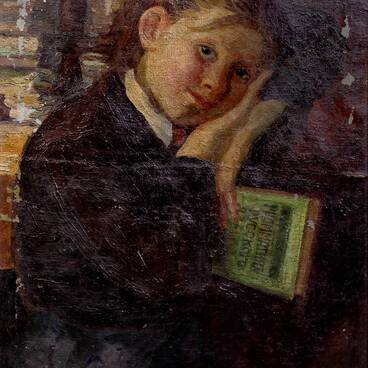The Airborne Forces were not established as a separate branch of service until 1991. Until then paratroopers had been part of the ground forces. The Navy, Air Force and, since 1946, the Airborne Forces were included in the reserve structure of the Supreme High Command and were directly subordinated to the Commander-in-Chief. Because of this, uniform colors and insignia of higher and junior commanders of the airborne troops were associated with the service they belonged to at the time. In addition, the type of uniform of a Soviet paratrooper depended on the climatic conditions of the place of landing and their rank.
At the beginning of the Great Patriotic War the paratroopers’ equipment included a dark blue overcoat, which was later changed to a general service overcoat. Also, the outfit of the airborne special forces included the so-called camouflage cloaks: white for winter and khaki patterns for summer. After the shoulder straps were introduced, aviation insignia appeared. The insignia with a parachute and two planes was introduced in 1955. It is the insignia that today symbolizes the unity and brotherhood of the airborne troops.
In 1979, a limited contingent of troops entered Afghanistan, including a special airborne group. A special uniform was designed for its soldiers, taking into account the climatic conditions. The contingent of Soviet troops included 696 servicemen from Stary Oskol; 11 servicemen died, 37 were wounded. Although the war is long over, it will haunt people’s hearts and minds for a long time to come.
One of those killed in Afghanistan is Igor Yurievich Lebedev. He was born on March 2, 1965 in Stary Oskol. He finished 8 classes of secondary school No.14 and entered Starooskolsky vocational school No. 12, and after graduation he was sent to work as an electrician for ATE plant. On November 12, 1983 Lebedev was called up on active military service by Starooskolsky military registration and enlistment office. He served in Afghanistan since January 10, 1984. Lebedev was the commander of the combat vehicle. He was killed in action on June 25, 1984. On July 31, 1986 I. Yu. Lebedev was posthumously awarded the Order of the Red Star.
At the beginning of the Great Patriotic War the paratroopers’ equipment included a dark blue overcoat, which was later changed to a general service overcoat. Also, the outfit of the airborne special forces included the so-called camouflage cloaks: white for winter and khaki patterns for summer. After the shoulder straps were introduced, aviation insignia appeared. The insignia with a parachute and two planes was introduced in 1955. It is the insignia that today symbolizes the unity and brotherhood of the airborne troops.
In 1979, a limited contingent of troops entered Afghanistan, including a special airborne group. A special uniform was designed for its soldiers, taking into account the climatic conditions. The contingent of Soviet troops included 696 servicemen from Stary Oskol; 11 servicemen died, 37 were wounded. Although the war is long over, it will haunt people’s hearts and minds for a long time to come.
One of those killed in Afghanistan is Igor Yurievich Lebedev. He was born on March 2, 1965 in Stary Oskol. He finished 8 classes of secondary school No.14 and entered Starooskolsky vocational school No. 12, and after graduation he was sent to work as an electrician for ATE plant. On November 12, 1983 Lebedev was called up on active military service by Starooskolsky military registration and enlistment office. He served in Afghanistan since January 10, 1984. Lebedev was the commander of the combat vehicle. He was killed in action on June 25, 1984. On July 31, 1986 I. Yu. Lebedev was posthumously awarded the Order of the Red Star.



